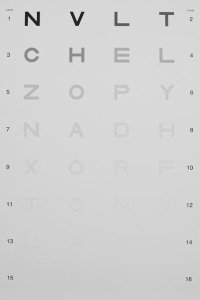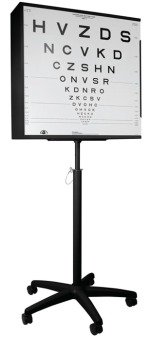|
Contrast Sensitivity Test
Does glare from oncoming traffic make it extremely difficult for you to see? Do conditions of fog or snow make it almost impossible for you to see? Have you been diagnosed with a Cataract? You may need to have a Contrast Sensitivity Test. What does a Contrast Sensitivity Test check?
A Contrast Sensitivity Test measures how low contrast situations such as glare, fog, rain, or snow conditions can affect your vision. Even though you may have 20/20 Vision in high contrast situations, your vision may be seriously decreased in low contrast situations. See the simulation below of the same scene. 

What are some reasons why your vision can be markedly decreased in low contrast situations? Optical or Media (i.e., involving the transparent Cornea and/or Lens of your eye) conditions such as:
As you can see, you may have 20/20 Vision in normal situations, but suffer from poor functional vision in low contrast situations resulting in loss of detail when driving at night, for example. Any of the conditions listed above can do this to your vision.
Why does a Sensitivity Test give you more information than a regular Eye Test Chart?
A characteristic Eye Test Chart consists of a number of high contrast, black-on-white letters, numbers, or figures of progressively smaller size. The smallest size that you can read denotes your visual acuity. 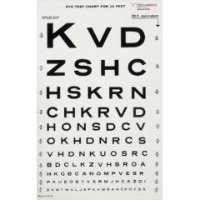
But in the real world, objects and their surroundings are of varying contrast. Thus, the relationship between visual acuity and contrast allows a more detailed understanding of your real world visual perception and how that perception can change with time. Contrast Sensitivity measures two variables, size and contrast while visual acuity measures only size. Contrast Sensitivity determines the lowest contrast level which you can detect for a given target size. A range of target sizes are used to measure the lowest contrast level for each size and these findings can then be plotted on a graph.
What can you expect from a Contrast Sensitivity Test?
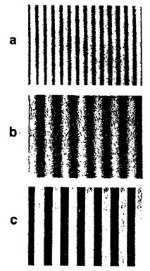
Examples of commercially available tests for Contrast Sensitivity: Arden Contrast Sensitivity System: 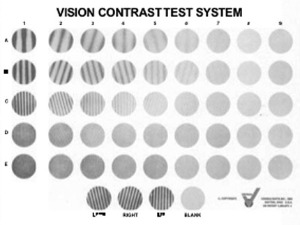
Vistech VCTS 6500 Contrast Sensitivity System:
Contrast Sensitivity testing has many applications besides discovering optical/media disorders and/or eye diseases. For example, in the military, it can help to better predict real-world visual performance. In order to standardize the illumination, and thus the contrast level, on these types of letter charts of varying contrast, the charts may have their own illuminator cabinets. See below:
Contrast Sensitivity testing can also help determine the visual function outcome of refractive surgery. If done before surgery, this testing can help communicate to you concerning your expectations for the quality of vision following surgery. In other words, if you already have low contrast difficulties before the procedure, then after surgery these may worsen. |





